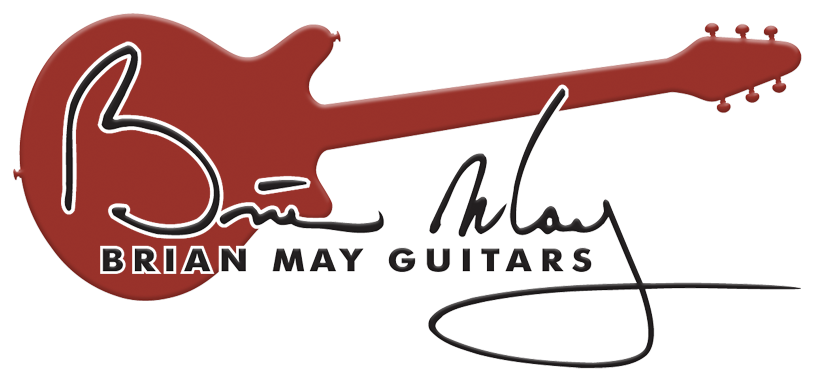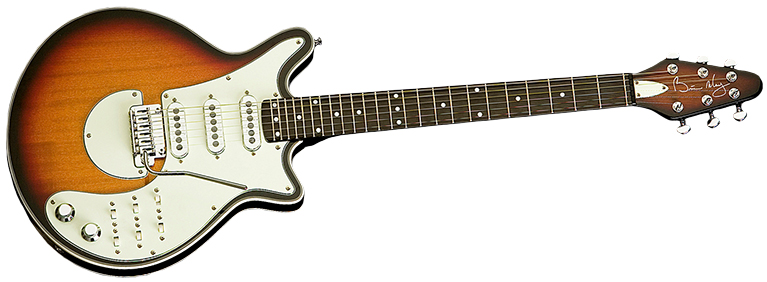
A new & improved version of the Brian May Signature guitar at an equally affordable price - don't stop them now!
When launched back in 2001, the Burns BM Signature was welcomed with open arms as, aside from anything else, it provided an affordable option for the legion of Queen-inspired players who couldn’t stretch to a four figure work of art by Greg Fryer, RS Guitars or similar.
Thanks to House Music’s Barry Moorhouse and input from both Brian and his technical right-hand man Pete Malandrone, a new company was set up to take over production from Burns, in order to improve the overall standard of construction and introduce new models like this and the long awaited Mini-May.
There are a number of refinements in spec too, which we’ll get to in due course.
Even though the new guitar looks close to May’s original, compromises had to be made in order for it to both realise its intended price point and be an instrument that could appeal to as many guitarists as possible, especially once the tonal versatility of the electrics became apparent.
Arguably the most noticeable departure that those fortunate to have spent time with Brian’s own Red Special will notice is the size of the neck. With this new version - and the first Burns version – the neck profile has a far more contemporary feel than the tree-trunk nature of the original, offering a reasonably deep, yet spacious, D-profile.
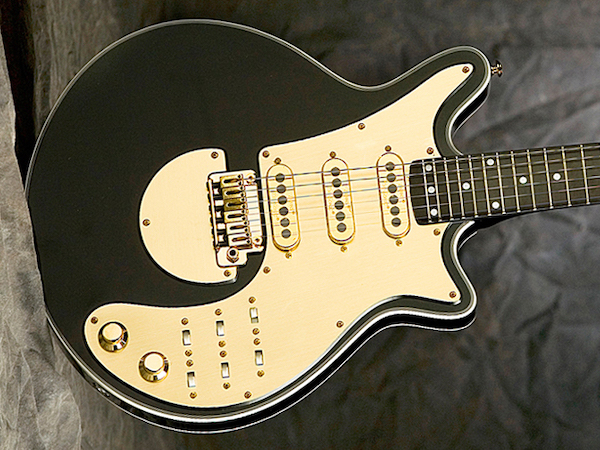
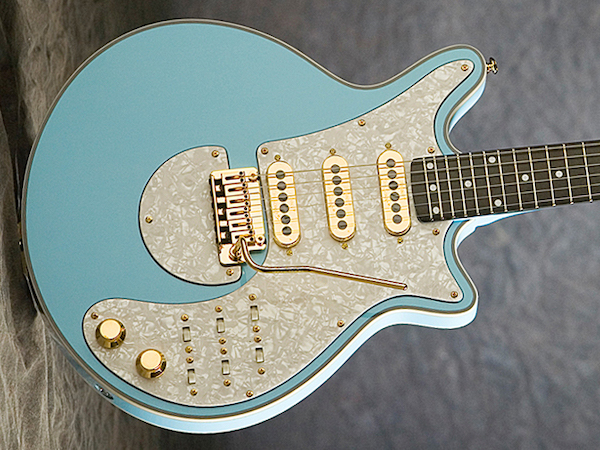
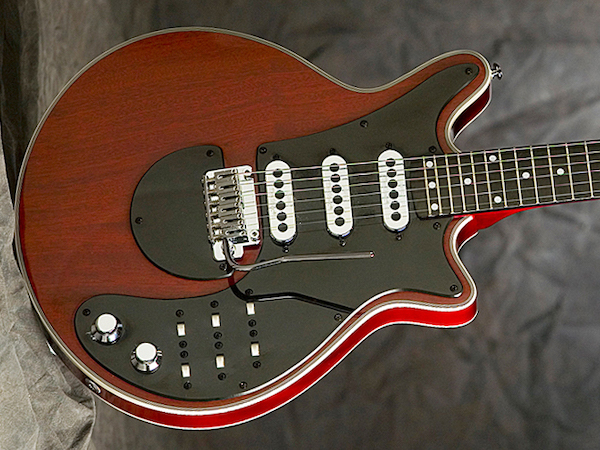
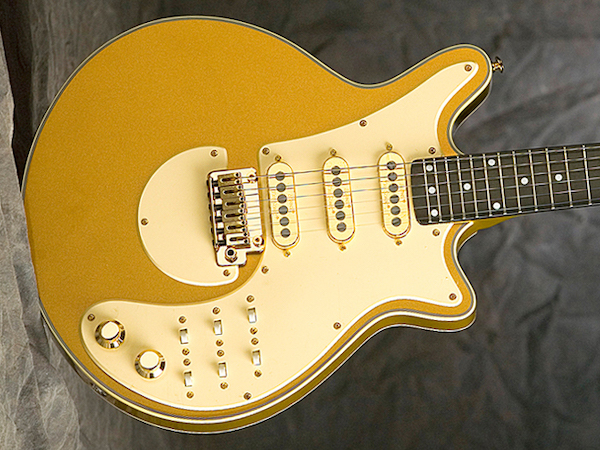
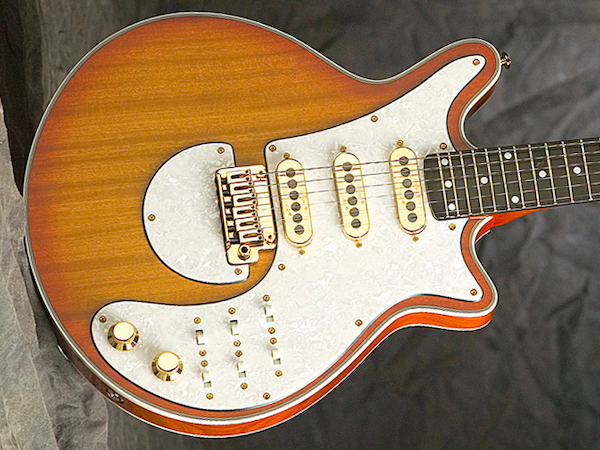
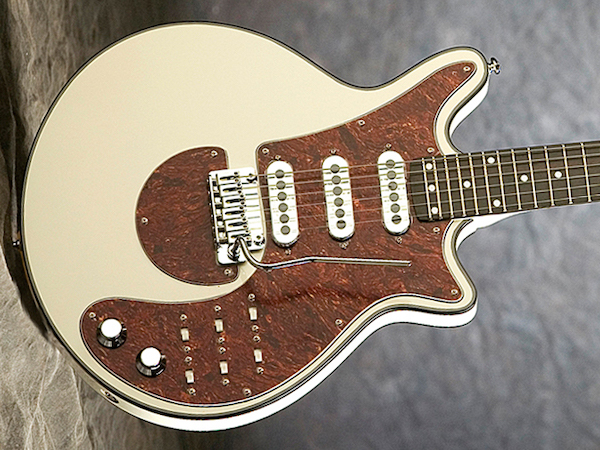
Much has been made of the trio of Burns single-coils. These are wired in series, one into another, as opposed to the parallel linkage of the classic Strat. The guitar also features the phase switching system that was developed by Brian and his father during the construction of the original Red Special back in 1964. Here, the sextet of slider switches are arranged into two rows of three, as usual.
One of the changes here is with the bridge, not least the cosmetically accurate inclusion of a semi-circular scratchplate behind the bridge, and the provision of chromed brass saddles.
The enigmatically bent tremolo arm also features a small grub screw within the collar and, on our example at least, is set a little higher than we remember being the case with the Burns version.
We do have a slight concern regarding the graphite nut, because the slots are a little untidy and overly tight with the bass strings.
Lo and behold, we did experience some tuning problems during our sound tests which was frustrating, especially considering the amount of subtle vibrato wobbles that are required.
Sounds
Having said that, we have no complaints as to the aural performance because, as we stated previously, there’s no obligation to play Queen-style music as there’s so much more you can do with this guitar. In fact, making a positive decision not to launch into any of those famous tunes is a good place to start, and with our stock Boogie combo – complete with non-Vox 6L6 power valves, naturally – the basic rock tone here is full and fruity.
Linking the bridge and middle pickup together in series drives the amp harder than using, for example, a Les Paul’s single humbucker, and when using an all valve amp, this equates to a warmer tone.
Add the trademark acoustic body chamber into the mix and you should start to get an idea of just how huge the guitar can sound. There has been a bonanza of BM signature items over the past few months, and so we tested the guitar with the excellent DigiTech Red Special pedal we reviewed last issue.
Thanks to both units, the goosebump factor reaches meltdown, as anyone can effortlessly sound like Brian – almost scarily so at times. Shame we’d already returned that Vox AC30BM!
The neck plays wonderfully on this guitar, although not quite as glassily as the original, and although there’s no doubt that the shorter scale and body size can take quite a bit of getting used to, the tone is all there.
Verdict
One of the reasons why we’ve looked at a three-tone sunburst version of this guitar is that this and other non-red finishes can help deflect unwanted attention from anyone who needs the versatility this instrument offers, without the perceived stigma of being painted into a Brian-shaped corner.
The jury is still out at Guitarist Towers with regards to the attractiveness of this particular combination of ‘vintage’ colours. However, we can more heartily admire the Jubilee Gold and Antique Cherry options that are also available within the catalogue.
The sheer wealth of tones presented by the three pickups and innovative switching system impresses, and for everything from honky country to all-out metal, the Brian May Special will rock you.
Leave all those preconceptions by the wheelie bins and try one out for yourself.
